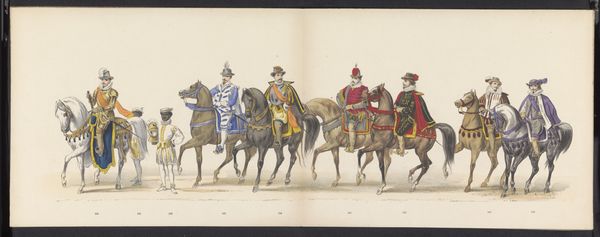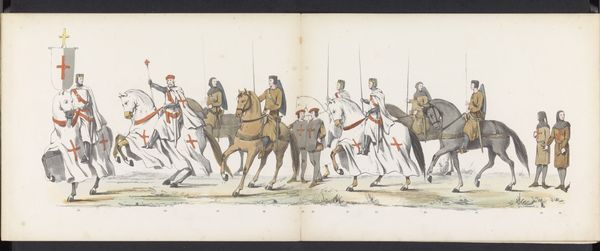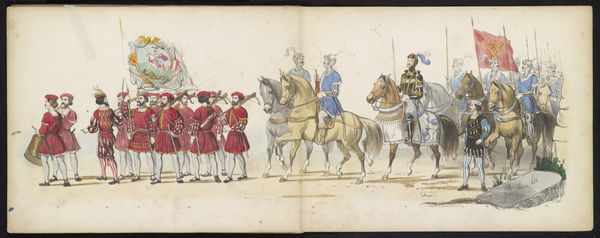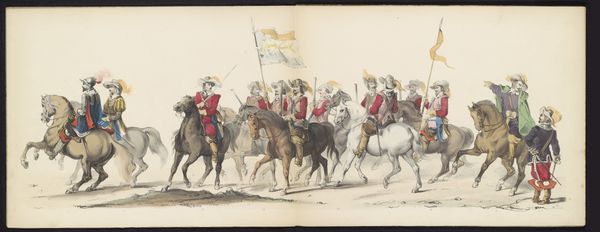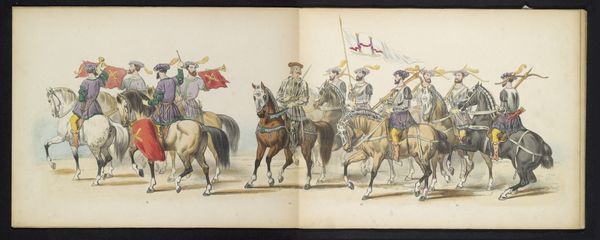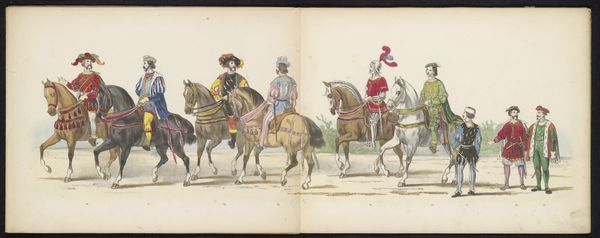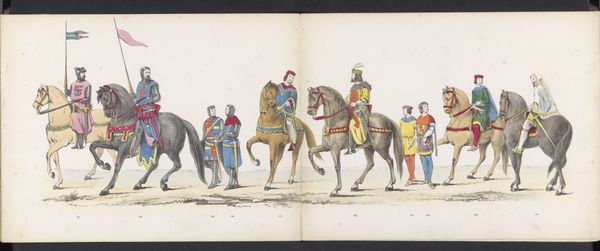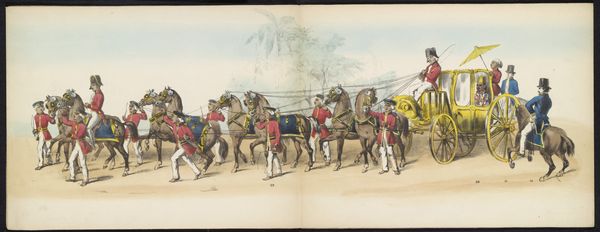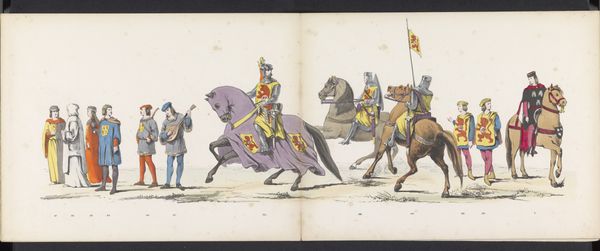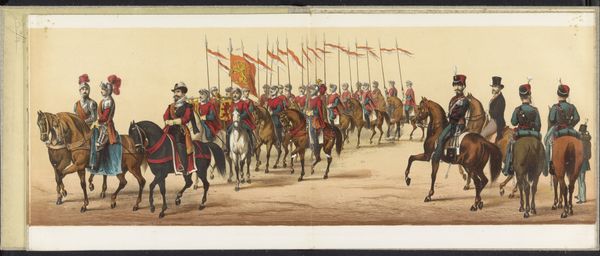
print, watercolor
#
portrait
# print
#
watercolor
#
coloured pencil
#
watercolour illustration
#
genre-painting
#
history-painting
#
watercolor
Dimensions: height 275 mm, width 710 mm
Copyright: Rijks Museum: Open Domain
Editor: This is "Maskerade van de Leidse studenten, 1870 (plaat 1)" by Gerardus Johannes Bos, from 1870. It seems to be a print made using watercolour and coloured pencil, and it depicts a procession of people on horseback. What do you see in this piece beyond the historical record of a student event? Curator: It’s crucial to consider the sociopolitical climate of the Netherlands at this time. While ostensibly a festive student event, this “masquerade” and its visual representation perform a certain kind of national identity. Note the costumes - they’re clearly evoking a historical period, perhaps to connect these students to a specific narrative about Dutch power and tradition. Do you see any symbols of that historical narrative here? Editor: Yes, the lion rampant on the banners and clothing appears in many historical coats of arms. It gives me a sense of connection to the past, but what kind of message were they sending? Curator: Precisely. What does it mean to restage history in this way? Think about what historical narratives are amplified, and which are suppressed. It's probably fair to assume it celebrates Dutch prosperity, painting a specific narrative about national identity for these students - potentially reinforcing specific class and cultural boundaries in 1870. Consider who has access to education, to horses, to commissioning or participating in art. Editor: That makes sense. So, even a seemingly lighthearted image can reflect complex power dynamics. It isn't just a snapshot in time but a construction of history itself. Curator: Exactly! It pushes us to question what stories are being told, whose perspectives are included, and what the broader implications are for our understanding of history and identity. This allows us to examine and perhaps deconstruct those power dynamics today. Editor: I'll definitely think differently about historical art now, realizing the layers of social commentary within what might seem like a simple depiction of a moment. Curator: Great! Let’s continue exploring these ideas as we encounter new artwork, understanding art as social action.
Comments
No comments
Be the first to comment and join the conversation on the ultimate creative platform.
